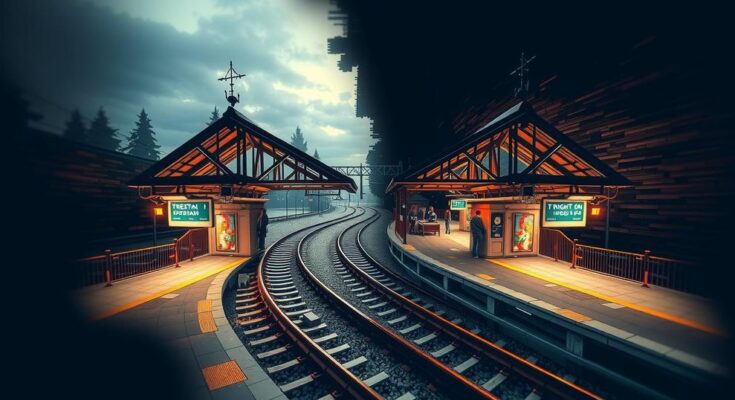By 2026, Istanbul’s Sirkeci and Haydarpaşa train stations will be transformed into cultural hubs, featuring museums and public gardens while maintaining their function as transport points. Haydarpaşa will house multiple art venues and for Sirkeci, a museum dedicated to migration will be established. These changes aim to enrich cultural heritage and foster community engagement without the addition of shopping malls or hotels.
Istanbul is set to welcome an extraordinary transformation by 2026, as two iconic train stations, Sirkeci and Haydarpaşa, are being evolved into vibrant ‘cultural islands’ filled with art, gardens, and history. Plans by the Turkish authorities will enable these historical sites to function as dynamic cultural hubs, featuring museums and galleries, while preserving their original use for railway transportation. Culture and Tourism Minister Mehmet Nuri Ersoy elaborated that shopping malls and hotels will not be included in the design to maintain the stations’ authentic charm. Haydarpaşa, once a grand stop for the famed Orient Express, is poised to become an art and culture haven, boasting exhibition venues, a performing arts center, libraries, and two museums once renovations are complete. The architectural masterpiece, crafted by German architects in the early 20th century, will invigorate Istanbul’s cultural landscape alongside the restoration of high-speed train services. Meanwhile, Sirkeci Railway Station is set to open a migration-themed museum, honoring its legacy as a departure point for Turkish nationals venturing to Europe. To support this ambitious initiative, an advisory board comprising curators, archaeologists, and engineers has been established. Sirkeci is already a darling of travel enthusiasts, celebrated for its deep historical roots tied to the Orient Express, earning rave reviews on platforms like TripAdvisor for its stunning Ottoman architecture and historical resonance. It is conveniently situated near major attractions like the Hagia Sophia and the Grand Bazaar, promising visitors a unique blend of history and modern culture. Excitingly, the project aims to preserve the essence of Istanbul’s European heritage, ensuring that future generations can appreciate the rich cultural tapestry of the area. As we glance forward, train lovers and culture seekers alike can anticipate exploring the artistic offerings these remarkable stations will inevitably introduce into the heart of Istanbul’s vibrant tapestry.
The transformation of Istanbul’s Sirkeci and Haydarpaşa train stations into cultural islands underlines a significant shift towards integrating historical landmarks with contemporary cultural experiences. By 2026, these sites will serve not just as transit points but as celebrated spaces for art and community events. The drive to preserve their historical integrity while enhancing public access reflects a broader trend of valuing cultural heritage in urban development.
The initiative to redevelop Sirkeci and Haydarpaşa into cultural islands marks a pivotal step in weaving cultural richness into the fabric of Istanbul. With art, history, and gardens merging within these storied walls, the project promises to foster a thriving cultural scene that honors the past while looking towards a vibrant future. Parks, museums, and exhibitions will create a nexus of creativity and remembrance in the heart of the city.
Original Source: www.thesun.co.uk



